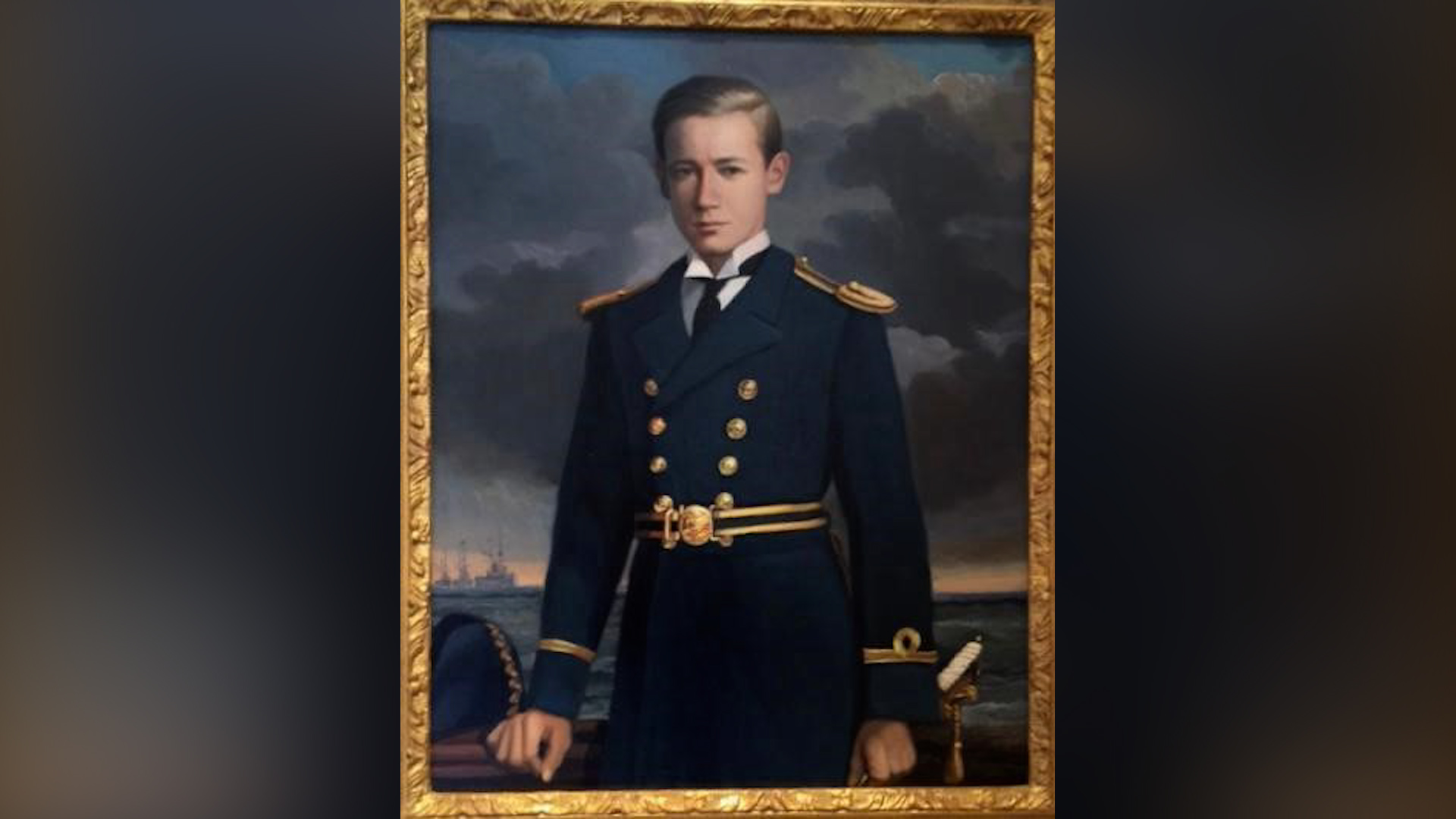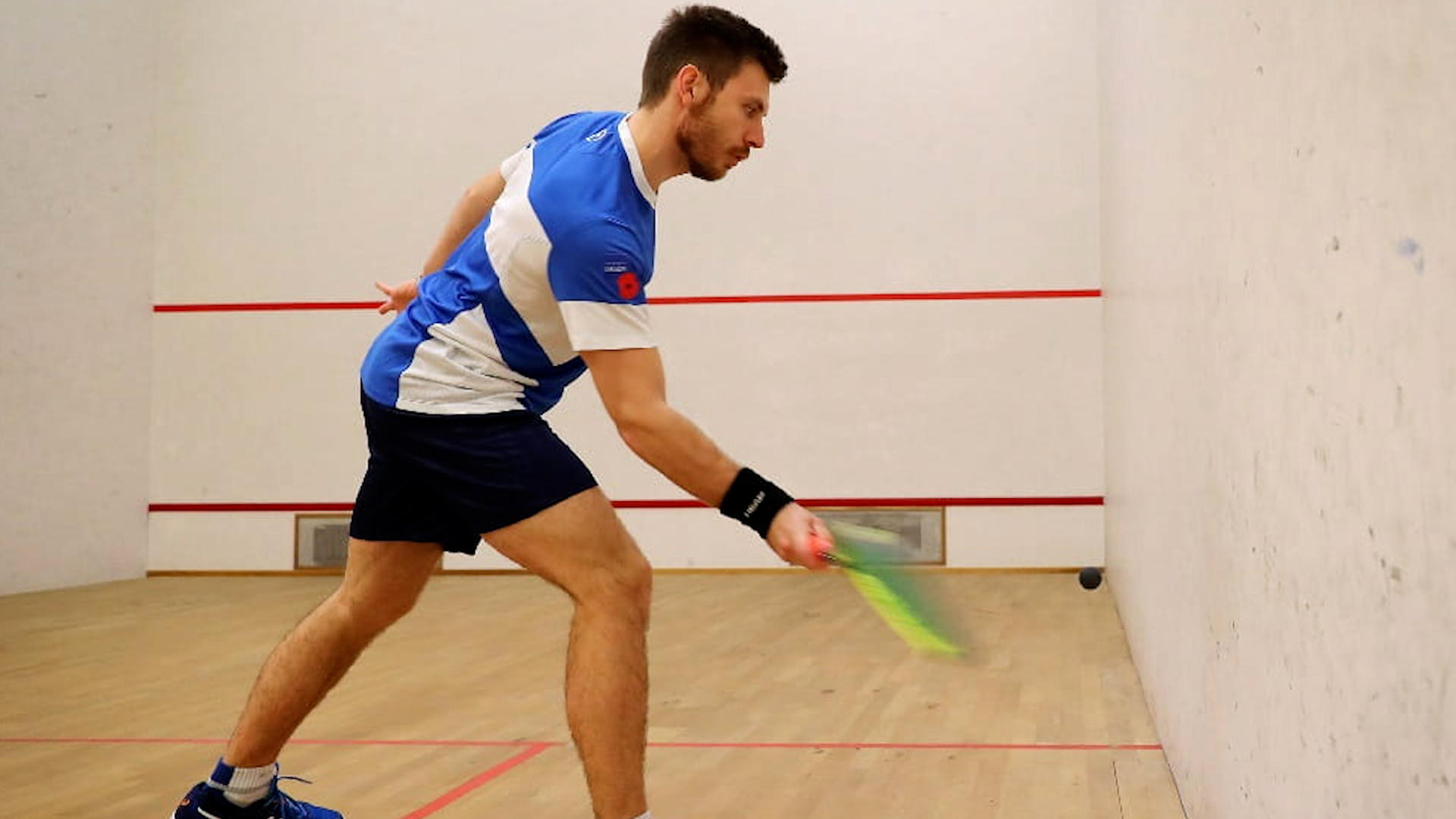
Centenary Royal Navy Squash Championships: A salute to Captain Robin Todhunter

2025 is a momentous year for the sport of squash in the Royal Navy as, on 27 February, Navy Squash will be celebrating 100 years since its very first championship.
A host of former champions will gather at HMS Temeraire and then later at the Royal Maritime Club in Portsmouth to celebrate and you can watch the open final live with BFBS – find out more here.
BFBS Sports Editor Jon Knighton has been given access by Navy Squash historian Alfie Halford to the diaries of the man who won the very first Royal Navy Squash title 100 years ago.
The story of Royal Navy squash is a fascinating one and runs parallel with one of its most famous sons, Captain Robin Charles Todhunter, who won the very first Royal Navy Championship in 1925.
Todhunter joined the Royal Navy in 1916 at the age of 13 and, three years later, he was at the Royal Naval College Dartmouth to begin his midshipman course.
By 1927, he was a captain and served with distinction in the Second World War.
His connections with squash in the Navy began in January 1925 when, at the age of 22, Sub Lt Todhunter was drafted to the newly commissioned battle cruiser HMS Repulse.

"I was delighted to receive a letter from their Lordships instructing me to join HMS Repulse. The Repulse and the Renown were the two latest 32,000-ton battlecruisers armed with six 15" guns in twin turrets and with a speed of 30 knots. The Repulse was serving in the Atlantic fleet, but she was going to take the Prince of Wales (who later became King Edward VIII) to South Africa and South America in May which was a very exciting prospect. I was instructed to join on January 1st, 1925."
In the lead-up to the arrival of the Prince of Wales on board, Repulse sailed to Gibraltar for gunnery exercises but, on the rock, Robin was able to enjoy squash on the newly built court there.
"Wonder of wonders there was a fine rackets court in Gib which the Army had built and the P.M.O gave me permission to play. There was a nice English pro and every morning of the fortnight I would go and play with him. The last day I actually beat him and, after all that practice, I am conceited enough to think I could have won the Navy Rackets championship on my head! We got back to Portsmouth on March 5th and had quite a strenuous time completing the refit and alterations ready for H.R.H."
Those alterations included having a squash court built on the ship so HRH could play. Before Prince Edward arrived, Todhunter was told of the role he would play during the time the ship was away.
"The Commander sent for me and said 'You are now responsible for the Royal Barge. She is being painted blue with a white waterline. All her brass work is being silvered and she will have a seat forward on which two Guardsmen will be sitting when you have HRH on board. You will be in charge of the Royal person between the ship and the shore'. By the time we left, the barge was the most beautiful boat you ever saw. HRH was a keen squash player. (He played in the amateur championship) and during the refit, a squash court was erected between the funnels. I don't think that I had been appointed to the ship solely because I was a good squash player, but it meant that I got to know him much better than I otherwise would have done through playing squash with him."
The Royal tour of Africa and South America had 14 stops. It started at Sierra Leone around the Cape of Durban and ended six months later in Mar del Plata in Argentina. It lasted for six months and covered nearly 11,000 miles.
"I had dinner with him the first day we were at sea and talked to him many times afterwards because of our regular squash games and I commanded the Royal Barge. We got to know each other quite well although I was much younger. I managed to thrash him thoroughly. He is bad in a small court because he is much too slow."

He left the Repulse in December 2025, and it was during his leave when he took part, and won, the very first Royal Navy and Royal Marines Squash Championships which were held at the Queen's Club in London.
His friendship with Prince Edward, who later became King Edward VIII, continued long after they played squash together on board Repulse.
In 1927, Todhunter resigned his Navy commission as a lieutenant, to work for Imperial Chemical Industries in Australia, where he won the Australian Amateur Squash Championship in 1930.

But, in 1939, he was called back to serve in the Navy again as the Second World War broke out, initially on HMS Furious and then at the War Office in London.
He was in the USA the day Pearl Harbor was attacked by the Japanese, which brought the United States into the war.
While there, he helped to develop the Higgins LCM Landing Craft – 1,500 of them were used for the Normandy Landings in 1944. By the end of the war, he reached the rank of captain.
Robin Todhunter might have been the first Royal Navy Squash champion, but the most successful was another Robin, Robin Bawtree.
He won 15 titles during his career. He will be there at the centenary finals on the 27 February, along with members of the Todhunter family when the final is played on squash court 3 at HMS Temeraire.
Robin Todhunter and his wife have four surviving children.
His daughter Elizabeth is 93 and lives in London. There are three sons – Tim is 91 and lives in Brisbane, Australia, Jonathan who is 89 and lives in Venice, and Charles, the youngest, who is 86 and will be present at the finals to present the centenary open champion with their trophy.
The name Todhunter will always be synonymous with the sport of squash in the Royal Navy.









